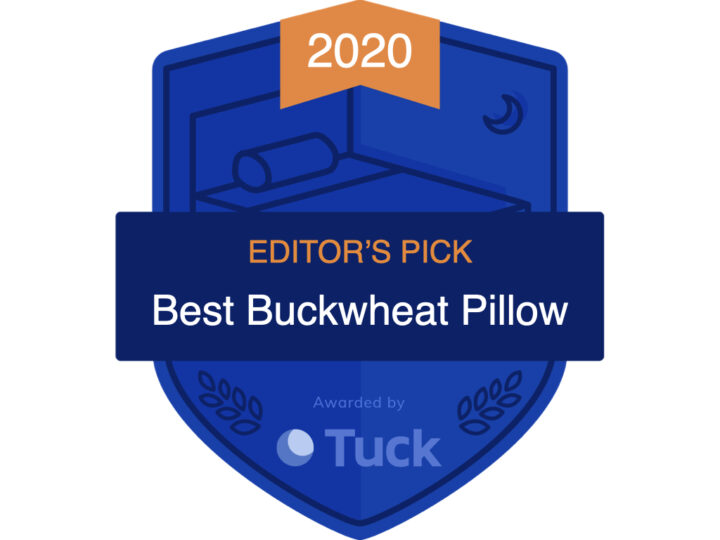
Hullo™ is obviously comfortable, but it has another benefit: it is a sustainable product. That is, it’s produced in a way that minimizes its impact on the environment and society.
When we started Hullo over 10 years ago, we knew we needed to do it responsibly:
- We make our buckwheat pillows with renewable, compostable, and organic materials. Hullo will not lie in a landfill for hundreds of years like pillows made with petrochemicals.
- Hullo pillows are designed to be durable and include easily-replaceable filling. A long-lasting product reduces resource consumption.
- Hullo is produced and transported using environmentally-friendly methods. The fabric cases, buckwheat hulls and cardboard boxes are produced locally, substantially reducing wasted energy and the pollution generated in transporting goods.
Additionally, we contribute 1% of all our profits to The Nature Conservancy, a nonprofit organization that is dedicated to protecting nature and preserving biodiversity around the world. Many eco-charities do good work, but The Nature Conservancy has proven very effective among its peers.
The Nature Conservancy works to:
- protect critical habitats: The organization protects important habitats for plants and animals, including forests, wetlands, and oceans. By conserving these areas, The Nature Conservancy ensures that these ecosystems continue to function properly and provide valuable services to humans and other species.
- Address climate change: The Nature Conservancy is committed to finding solutions to the climate crisis, which is one of the biggest threats to biodiversity and the health of our planet. They work to promote renewable energy, reduce carbon emissions, and promote sustainable land use practices.
- preserve endangered species: The Nature Conservancy protects endangered species by preserving their habitats, reducing threats from invasive species, and working with local communities to promote conservation.
- promote sustainable agriculture: The organization works with farmers and ranchers to promote sustainable agricultural practices. This helps protect soil health, water quality, and biodiversity.
- support scientific research: They conduct scientific research which helps us better understand the natural world. This research then informs effective conservation strategies.
Please consider making a donation to The Nature Conservancy. You and/or your business can support these important conservation efforts and protect the planet for future generations!

Flying is rarely a comfortable experience, even when you’re sitting in first class seats.
Packaged shoulder-to-shoulder in a tight little cylinder with germ (and virus) spewing strangers is a difficult endeavor, especially when it’s a long flight. Ever tried to sleep on an airplane? I see people sleeping soundly while in flight and it makes me very envious. How do they do it? I’m tall and it seems I’m incapable of sleeping upright. For that reason, plane travel is especially difficult for me. I can’t stretch out my legs, and there’s no place to rest my head.
Sitting comfortably is difficult. Sleep is impossible. Flying sucks.
While passing through an airport recently, I took notice of the many ridiculous looking neck pillows wrapped around traveller’s necks.
They can quickly transform a fashionable traveller into a frumpy neck-injury patient. Despite that, these odd pillows are quite popular. It seems that every store in the airport has a goofy version of the travel pillow.
I was intrigued. Would an airplane pillow help me get comfortable on the plane?
Consider what your bed pillow does for you every night at home… It cradles your head and neck. It fills the space between your head and your mattress while keeping your body in a neutral sleeping position — your neck and back are in a straight line without any upward or downward bends in your spine. Maybe you have to fluff it a little, smoosh in a certain way, or even fold it in half… your pillow works to keep your head positioned comfortably so you can sleep.
It’s really difficult to sleep upright in a seat because inevitably your head will nod forward or to the side, waking you. It’s easy to take sleeping horizontally for granted! Airplane pillows are designed specifically to support your neck and neck while seated in an upright position. Do they work? Let’s find out…
I decided to try an airplane pillow on my next vacation.
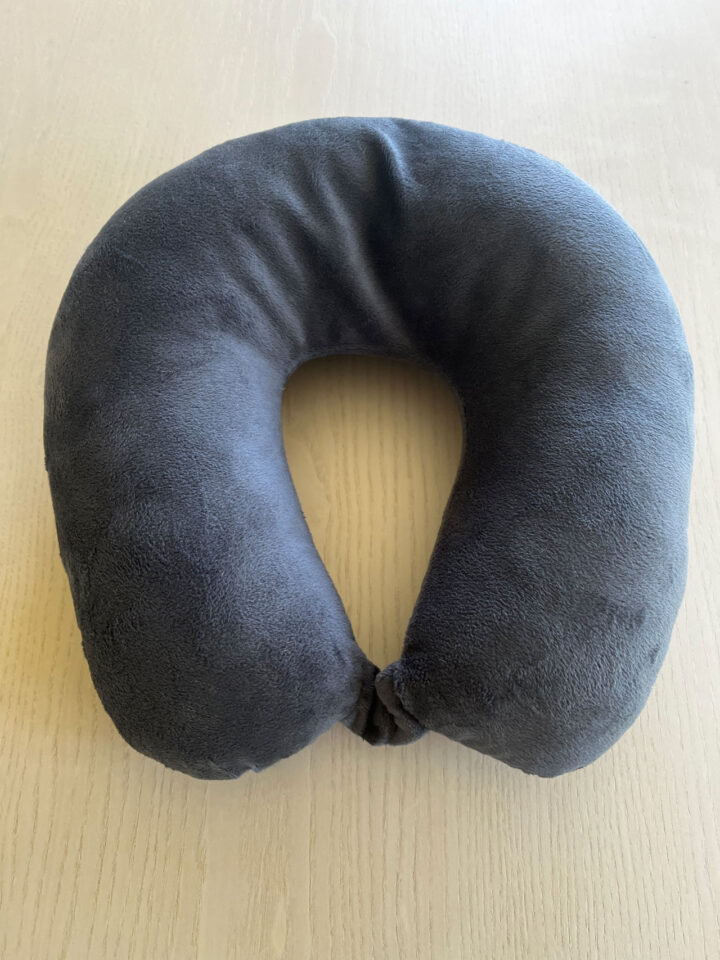
My family planned a trip to California, a 5 hour red-eye flight. This flight would be the perfect use-case. I knew that they’d charge me an arm and a leg for one at the airport, so I did some searching online prior to my trip. I read through reviews and it seemed as though most people had a good experience with airplane pillows. The negative reviews demonstrated reasonable and consistent complaints, so it was obviously not a slam-dunk. I picked the best airplane pillow I could find (“best?” It seems as though 90% of the airplane pillows available are nearly identical, so my thorough shopping efforts were largely in vain).
Pro tip: It turns out that the TSA doesn’t GAF about your little airplane pillow. Also, most airlines don’t count them as an individual carry on, so wrap as many as you want around your neck!
The day of my flight arrived. I wrapped the pillow around my neck and sheepishly proceeded to my gate.
My daughter made non-stop jokes about my appearance. “You expecting vampires on the plane?” She wouldn’t be laughing when she saw me sleeping soundly, head cradled in the magic airplane pillow!
We boarded the plane. I sat in my seat and quickly realized that the pillow was forcing my head forward, away from the seat back. My seat was completely upright still, as we hadn’t gotten off the ground. I removed the pillow from my neck and waited patiently with the it in my lap while the plane ascended into the night air.
DING. The seatbelt indicator lights dimmed. I quickly reclined my seat as far as it would go.
Normally, I’m not one to do a full recline. Yes, the seats are designed to do that, but it drives me crazy when the seat in front of protrudes into my precious space. I try to be a conscientious traveller. Fortunately, today my unsuspecting daughter was behind me. After suffering her abuse at the terminal, it seemed appropriate to push back as far as I could go.
With my seat now fully reclined, I placed my airplane will around my neck and prepared to relax.
It was immediately obvious that it wasn’t going to work.
The airplane pillow still pushed my neck and head forward in an uncomfortable bend. “How can anyone think this is comfortable?”
I tried to push the filling from the back edge to the two sides to allow more room for my head to lean backwards. Nope.
Fortunately this pillow had a zippered opening, which allowed me to remove some of the filling. That’s a unique feature that most airplane pillows don’t have. I opened it up and was surprised to see what appeared to be brown wool. Weird. (according to the product description, it’s actually a polyester microfiber)
I stowed the extra pillow filling in my seat pocket and tried again.
Better. Now the airplane pillow allowed enough room for my head to rest all the way back in my seat. I tried to relax. It still didn’t work for me. The pillow simply wasn’t thick enough on the sides to support my head. My cheek compressed the pillow filling, causing my neck to bend uncomfortably.
Resigned, I handed it to my daughter who was happy to give the airplane pillow a go in the dark cabin where aesthetics are of secondary concern. She too conceded that it wasn’t suitable when used as intended. She put the pillow in my wife’s lap and laid her head on it. Now it looked comfortable. I sat awake and endured the long night nodding off with Netflix.
I won’t be using it again.
My airplane pillow wasn’t useful. In fact, it made my seat more uncomfortable. Despite the adjustment in the amount of filling, it only served to take up valuable space and get in the way.
I am 6’1” tall. Perhaps it’d work for some with shorter or thicker necks. However, my 5’5″ daughter didn’t care for it either so that’s probably wishful thinking. Also worth mentioning: I wasn’t fortunate enough to have a window seat, but I imagine that if you could lean against the fuselage/window, it could feasibly be considerably more comfortable.
To the credit of the folks designing and manufacturing these pillows, it’s no easy task to make these things work.
Given my experience, I’d assume that a smaller rectangular or cylindrical (bolster) pillow would be preferable for use on an airplane. That said, there are a few other really unique designs that approach the issue of support much differently than the traditional u-shaped pillows. I’m resigned to flying sans pillow for now, but I might have to try again with a different type soon!
EDIT 3/1/24
I recently came across a few helpful threads at reddit about travel pillows. While most comments confirm my experience, some people invested in unique products that seem to actually work. I’ve never tried it, but people really seem to like a product called the “Trtl Pillow.”
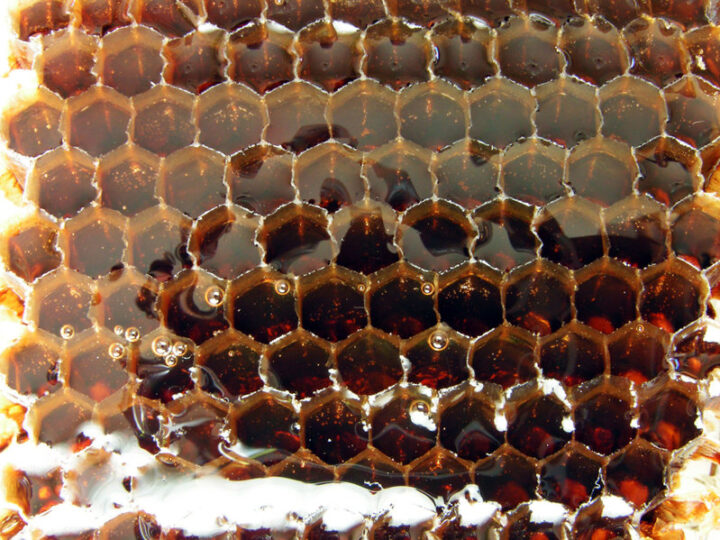
My wife recently asked me, “have you tried buckwheat honey before?” Nope. I’ve been living and breathing buckwheat pillows for many years and, oddly the opportunity to taste it had never come up. I was curious.
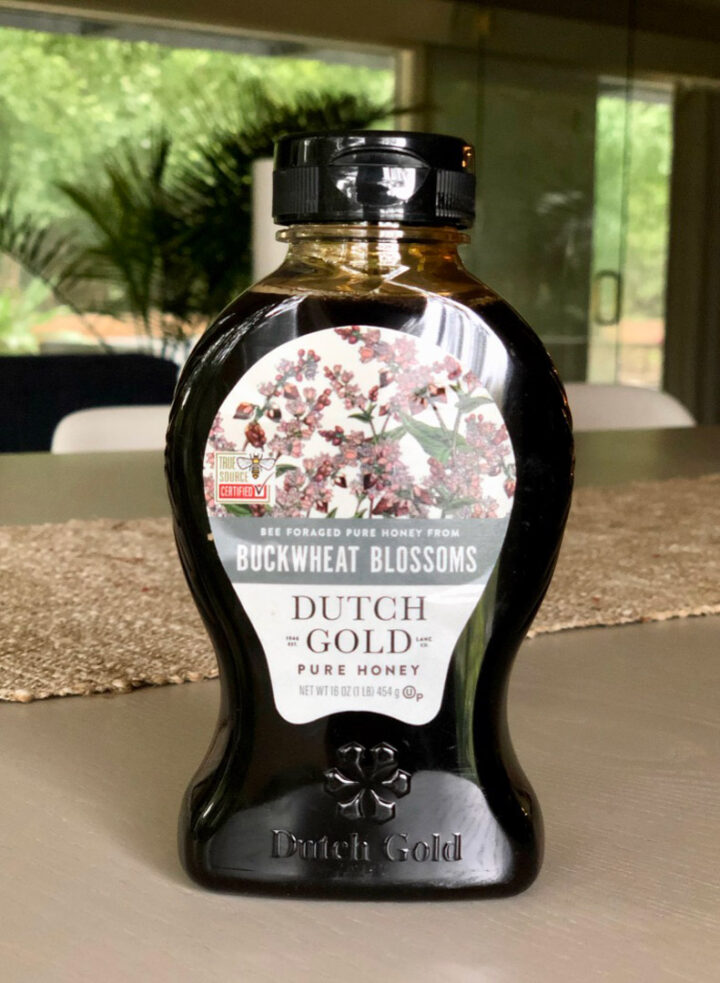
The internet’s flowery reviews call buckwheat honey “funky” and “like a barn.” That doesn’t really sound appetizing. Honey is supposed to be sweet and delicious… Undeterred, I ordered “pure buckwheat honey” from a company called Dutch Gold.
Buckwheat honey is very different from the yellow stuff in the plastic bear container.
Apparently the lighter a honey’s color, the milder the flavor. The typical yellow honey most of us are familiar with is filtered at high temperatures to remove things like pollen and beeswax. As a result, their flavors are much more mild.
Buckwheat honey’s dark color is a result of the polyphenols it contains. Polyphenols are type of micronutrient that naturally occurs in plants. Foods and beverages rich in polyphenol compounds typically are associated with bitterness.
When my package arrived, I pulled it out of the box and showed my kids.
Buckwheat honey is quite dark in color, a translucent brown. I’d guess it was molasses if it wasn’t labeled. Apparently it ranges in color from purple to black.
The kids were anxious to taste it.
“Yuck.” The reaction was the same from both. They’re never enthusiastic about new foods, so I shrugged and indulged.
The flavor is strong and… unexpected. Weird. “Funky,” yes. It not only looks like molasses, it also tastes reminiscent. It’s a little spicy, with malty overtones. It has an odd bitter characteristic that is quite distinctive. It’s also not as sweet as typical honey.
Where the buck does it come from?
Most honey is distinct from other types because of the nectar of the flowers used to produce it. The buckwheat plant produces long-lasting flowers that bloom into the fall. These flowers create a distinct nectar that honey bees love. As such, beekeepers often plant buckwheat around their beehives. The resulting honey is unique in both appearance and taste.
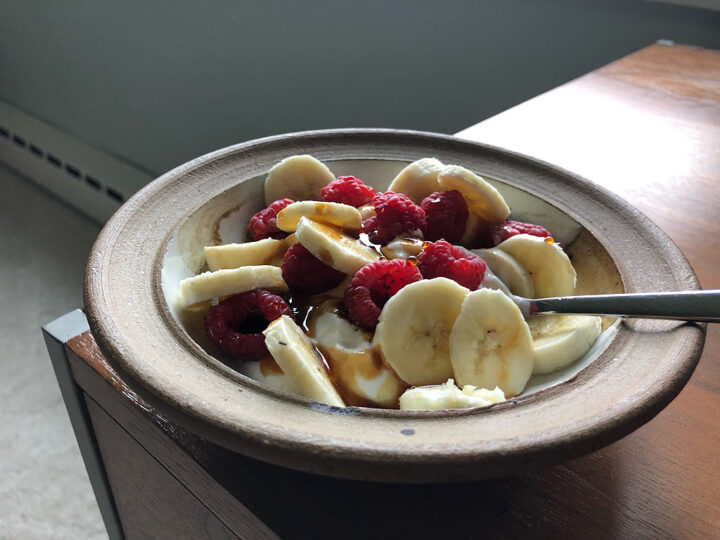
Buckwheat honey is an acquired taste.
Initially I thought it was a little too strange. But I’ve been having it with yogurt and fruit this week and it’s really grown on me. The flavor is surprisingly overpowering when sampled alone, but when it’s paired with other flavors, it’s really delicious. Halfway through the bottle, I’m a huge fan of buckwheat honey. My wife loves it too.
Is Buckwheat Honey Better for You Than Regular Honey?
Buckwheat honey is often considered more beneficial than regular honey due to its unique nutritional profile and higher antioxidant levels. Studies have shown that it contains a greater concentration of antioxidants compared to lighter, more common varieties of honey. Antioxidants are crucial for protecting the body from oxidative stress and reducing the risk of chronic diseases such as heart disease and cancer.
Furthermore, buckwheat honey has demonstrated stronger antimicrobial properties, making it more effective in soothing coughs and sore throats. Its rich, dark composition includes higher amounts of vitamins and minerals, such as iron, magnesium, and zinc, which contribute to its health benefits. Additionally, buckwheat honey’s low glycemic index means it has a more moderate effect on blood sugar levels, making it a better option for those monitoring their sugar intake.
Overall, while regular honey also offers various health benefits, the superior antioxidant content and enhanced therapeutic properties of buckwheat honey make it a more advantageous choice for those seeking additional health benefits from their sweeteners.
A couple good tips that can make your buckwheat honey more useful:
- Don’t use it in any recipe that calls for honey, because the flavor can be overpowering and it’s lacking the sweetness of traditional honey.
- Because it’s not a simple sweetener, it’s not quite as versatile as a traditional yellow honey. But it is great for when a little sweetness is required and extra flavor won’t get in the way of another. Thus it works well for things like marinades and bbq sauces.

Shoulder pain can often get in the way of quality sleep. Even a mild ache can keep you tossing and turning all night.
Shoulder pain isn’t always evident until you climb into bed. Sometimes the pain-causing compression of muscles, nerves and connective tissue only occurs when you lie down. Gravity pulls on your body differently when you’re reclined, which can reveal or cause pain that wasn’t present during the daytime.
The best way to avoid all sleep related pain isn’t easy or interesting 🙁
Cue the sad trombones… I know this isn’t what you came to read, but it must be said. Consistent exercise is proven to both prevent injuries and aid in sleeping. It’s a long-term commitment and it’s hard work. However, it’s a crucial part of preventative care.
If you’re a side sleeper, try a new sleep position.
Shoulder pain is usually exacerbated for side sleepers because body weight results in pressure on connective tissues and nerves all night. Pain can often be completely eliminated IF you’re able to sleep on your back. It’s a challenge for most, but it could be the resolution to your shoulder pain.
Looking for simpler solutions? Sleeping with shoulder pain is sometimes made easier with just a new pillow or mattress.
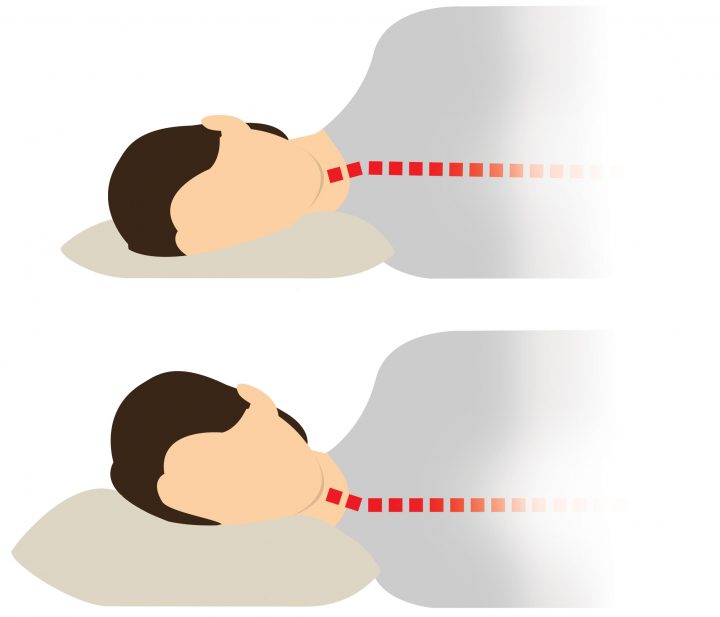
The wrong pillow can exacerbate or even be the cause of your shoulder pain.
In an effort to get a little more loft (height) out of their worn-out pillows, some people fold them in half. This most often elevates their heads too high, causing an uncomfortable upward bend in their bodies. Alternatively, many sleep with their arms under their pillows. Both situations can put pressure and stress on our muscles, joints, and nerves in shoulders and cause unnecessary agitation.
Try replacing your pillow with a more suitable one that supports your head properly and comfortably. A good pillow will keep your spine from bending unnaturally upwards or downwards and provide comfortable, even support for your entire head, neck and shoulders.
The firmness of your mattress also is a factor in your sleeping position and comfort.
Pillow top mattresses have become very popular. While they can feel very comfortable initially, they can become a detriment to good sleep. That’s because they’re often too soft. Thus, they don’t adequately support the heavier parts of your body. Your shoulders may be sustaining more pressure due to the mattress sagging too much under the weight of your torso.
OK great, but what can be done about the shoulder pain I’m feeling right now?
If you’ve just woken with sleep-related shoulder pain, try these tips:
1. Give your neck and shoulder muscles a rest.
Your giant head weighs around 11 lb. That’s a lot of weight that your neck and shoulder muscles need to support. Give your muscles a break. If you’ve got some time to spare, lie down. Make sure your head is in a neutral position and that you’ve got a comfortable pillow. More rest is often the best remedy even if you just rolled out of bed.
2. Do your best to avoid stress.
Are you worried that the boss will find out you’ve been stealing from the business for years? Concerned about an early death? Forget your problems and watch a movie or read a book! I recommend Ozark on Netflix.
3. Ice in short increments.
It can work well for some, but cooling can aggravate more serious issues, so If the pain worsens, remove the ice immediately.
4. Have a partner massage the affected area.
Who doesn’t appreciate a good massage? Shoulder pain or not, it generally makes life in the moment a little better.
5. Use a warm compress.
A warm damp towel (use a microwave to heat it) can help to increases circulation and is often effective in providing relief to stiff muscles. Beware, heat can make inflammation worse, so if your symptoms deteriorate, remove that heat immediately!
6. Pop a couple of what modern medication has to offer.
Aspirin, acetaminophen, or ibuprofen can help a lot if the pain isn’t too ridiculous. It should go without saying, but please follow the directions on the packaging.

7. Stretch the muscles in your shoulders.
It’s always best to warm up muscles before stretching, so it’s advisable to take a hot shower or use a hot compress first. The key with stretching is to not overdo it! Try this simple shoulder stretch recommended by health line.com:
- Bring your right arm across your chest.
- Place it in the crease of your left elbow or use your left hand to support your arm.
- Hold this position for up to 1 minute.
- Repeat on the opposite side.
- Do each side 3–5 times.
Are you consistently getting no sleep with shoulder pain?
If you had a bad night or two, try all of the above and hopefully you’ll get some relief. If you’re experiencing shoulder pain from sleeping on a consistent basis, do something that addresses the root of the issue(s) rather than just treating the symptoms. I recommend that no-fun exercise!

Google searches for “down alternative pillow” are growing. There are many different types of down alternative pillows. Many of the most popular types are filled with a unique filling, called gel fiber. What’s so interesting about a gel fiber pillow?
Gel fiber is a type of “micro denier” made from synthetic polyester. Denier refers to the thickness of the fibers. Gel fibers are, simply put, very thin synthetic fibers. They were designed specifically to mimic the properties of duck down.
Traditional down pillows are already popular for a lot of reasons. They’re durable (if you take good care of them), moldable/malleable, work well for most sleeping positions, AND they’re biodegradable.
It’s hard to complain with a list of benefits like that! Or is it?
Haters gonna hate! Down pillows are:
- expensive. Harvesting high-quality down from birds is a labor intensive job that will cost you.
- difficult to clean. I’ve managed to destroy several pillows and at least one comforter in my washing machine. Proper cleaning can be a bit tedious.
- made from animals! Yes you heard it here first, folks: down feathers don’t grow on trees. Thus, those who are concerned with animals’ well-being, should be aware that purchasing down products may result in the poor treatment of animals.
Gel fiber pillow filling attempts to mimic down’s advantages while improving upon some of down’s disadvantages.
Gel fiber pillows compete on:
- price. They’re far cheaper than genuine down.
- durability. While a good down pillow can last a very long time if cared for properly, most gel fiber pillows are very easy to clean without damaging them.
- a supposed “hypoallergenic” quality that’s superior do traditional down. Hmmm…
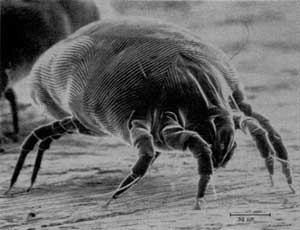
Get out of our pillows!
How common are down allergies?
While researching down’s disadvantages, I discovered that a lot of these gel fiber pillows are sold on allergy fears. That’s usually misguided.
People frequently mistakenly blame allergic reactions on a down pillow. Genuine feather allergies are actually quite rare. As it turns out, most reactions can actually be attributed to dust mites or mold. That’s true of any pillow type, however. Pillows generally become more allergenic with age.
Read More: A Hypoallergenic Pillow Should Be Judged with Skepticism
Hypoallergenic claims don’t carry much water.
That’s because there is no regulation in the United States that defines or governs the use of the term. As a result, hypoallergenic pillows can be advertised with impunity. Pillows that are no better or worse at resisting allergens are labeled hypoallergenic without consequence.
A medical dictionary provides a somewhat vague definition:
“Hypoallergenic” – Adjective
A term applied to a preparation in which every possible care has been taken in formulation and production to ensure minimum instance of allergic reactions. Blakiston’s Medical Dictionary
Has “every possible care been taken,” to prevent allergic reactions in a gel fiber pillow? That’s hard to know…
Unless you’re aware that you’re allergic to real down filling, just ignore the salesmen’s mumbo-jumbo.

Can this petrochemical plant help you sleep better?
Unfortunately almost all gel fiber pillows are made with potentially harmful petrochemicals.
We won’t be recycling these pillows. The polyester fibers will sit in landfills, taking as long as 200 years to biodegrade.
What’s more, polyester products are manufactured using dangerous pollutants that are dangerous to both the environment and human health.
There are other down alternative filling varieties, each with its own unique characteristics.
I waded through tons of product descriptions and researched all the trademarked names. It turns out that, unlike other pillow fillings, the down alternatives aren’t very consistent. One pattern was clear however… It appears that the most popular options (also the cheapest) are stuffed with traditional polyester fiberfill.
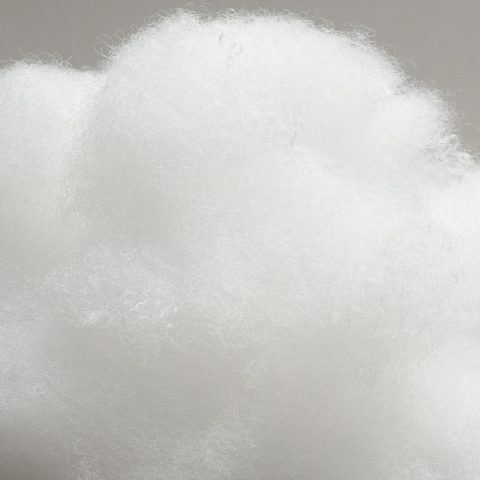
Traditional Polyester Fiberfill
Also known by its trademarked name, Poly-Fil™, polyester fiberfill is the cheapest and perhaps most prevalent filling used in down alternative pillows. You know these pillows — they’re the flat pillows from your spare bedroom… The bags of lumpy filling that 80s moms thought were good enough.
Down alternative pillows made with polyester fiberfill:
- don’t last long due to issues with the fill clumping and flattening out.
- retain more heat than traditional down pillows.
- aren’t malleable/moldable.
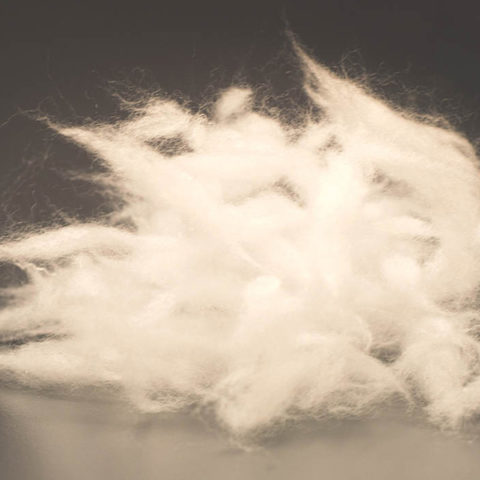
PrimaLoft™
On the other hand, we have new synthetic microfiber pillow fillings. These are far superior to polyester fiberfill. Many have trademarked names like PrimaLoft™, Spira™ or LiquiLoft™. Other varieties are stuffed with a more generic sounding “gel fiber filling.”
It’s a bit simplistic to group these these microfibers together, because each does seem quite unique. What’s clear is that they’re all far more durable, compressible, breathable and malleable than traditional polyester fiberfill.
Shopping for the best down alternative pillow isn’t easy.
It’s difficult to tell which pillows contain the cheap polyester fiberfill vs. something filled with technologically advanced microfibers.
I shopped around at Amazon and purchased two different down alternative pillows. One pillow’s filling was called “gel fiber” and the other cheaper model’s was a “virgin polyester fiber.” I really didn’t know what to expect, but I assumed the cheaper one was probably just filled with traditional lame polyester fiberfill.
My new gel fiber pillows arrived.
First, let me mention that they didn’t smell bad! Often I’ve received pillows that emit a powerful chemical “off-gassing” odor. Memory foam pillows are the worst culprits. These down alternative pillows had absolutely no discernible odor.
The “virgin polyester” filled pillow was just as expected. Filled with traditional polyester fiberfill, it was not impressive.
The gel-fiber pillow, however, was much more interesting.
I’d bought a strange pillow that was “gel-infused” once before. It supposedly would keep me cool (it didn’t). This gel pillow was something else entirely. It didn’t contain any funky blue liquids. It was filled with tiny gel-fibers, apparently each much thinner than a human hair and made with 100% polyester.
I didn’t expect much, but it was surprisingly comfortable. It was breathable and comfortable, although I noticed immediately that it was less moldable, or malleable than traditional down pillow filling.
Additionally, the high quality down alternative fillings seem just as breathable and cool as traditional down. And they’re obviously far more breathable and cool than both memory foam and polyester fiberfill.
The deal breaker for me was the lack of malleability.
No matter how I’d scrunch or squeeze the pillow, it’d bounce back to its original shape. I couldn’t quite get it to feel right when I curled onto my side to go to sleep. the soft filling pressed uncomfortably against my face and no readjustment seemed to help.
The higher-quality down alternative pillows are not bad products. They’re cheap and are far better than the polyester fiberfill pillow my mom bought for me in 1984.
I think there are better pillows to be had. Genuine down pillows for example! I think the only genuine advantage that the down alternatives have is price and ease of cleaning. Real duck down is superior in every other way
In short, no, buckwheat pillows do not attract bugs. Buckwheat flour and other cereal products can provide insects sustenance, but the empty hulls that buckwheat pillows are filled with are not edible.
But wait… some kinds of insects are inside all pillow types!
Dust mites are the real bug menace and unfortunately no pillow type is immune to them.

Dust mites are one of the top five most common allergens. The effects of a dust mite allergy are very similar to a pollen allergy.
“Dust mites are microscopic creatures, about 0.4 millimeters in length, that feast on flakes of human skin. Their feces contains a substance called DerP1, a very potent allergen. People who are allergic to dust mites may have asthmalike symptoms, eczema or chronic sinus problems.” NYTimes.com
Some buckwheat pillow manufacturers claim that their pillows are dust mite resistant. Not true. They’re no better or worse at resisting dust mites than any other type. Unfortunately no pillow, not even so-called “hypoallergenic pillows” are immune to dust mites.
With use, your pillow will inevitably accumulate small particles of organic materia. Dust mites crave this stuff. Every night you sleep on your pillow, you leave behind delicious dead skin for dust mites and their happy families!
What can you do to avoid dust mites?
- Lower the humidity in your home. Dust mites only appear in humid environments. Homes with a relative humidity of less than 50% aren’t likely to host dust mites.
- Use dust mite covers. These are generally vinyl or plastic covers that prevent foreign materials from getting inside your pillow. While most experts recommend them, they are still somewhat controversial. An unfortunate drawback to dust mite covers is that they will prevent air from moving freely through your pillow. This can result in it retaining heat and being uncomfortable.
- Take extra care to keep your pillows clean. Wash your pillowcase frequently.
Should I be concerned about dust mites if I’m not allergic?
I’ve read some pretty shocking claims about dust mites. Despite the (likely exaggerated) stories, dust mites aren’t something most of us should be too concerned about. They will not take up residence in your bedding unless the circumstances are just right. Even if a few of them do, they’re not going to cause any trouble unless you’re allergic to them.
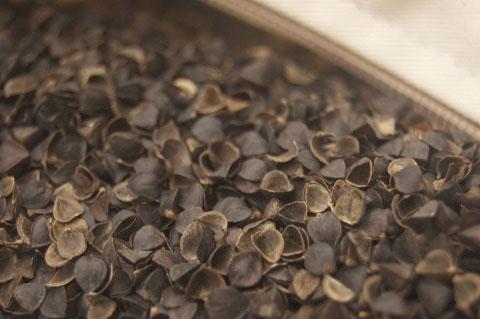
Dust mites are the most common insect scenario to pop up in a buckwheat pillow, but there are other possibilities.
However improbable, tiny grain beetles can exist in some pillow fill types like buckwheat hulls or millet, but only under the right conditions.
To understand, first let’s look at how buckwheat hulls are produced. The buckwheat plant is milled for the nutritious groats it produces. During the milling process, the groat is separated from its protective outer layer, the hull. Then the hulls are vacuum cleaned to remove any remaining groats or other plant materials. A few types of very tiny grain beetles eat buckwheat flour, and other cereal products like rice.
Despite vigorous vacuum cleaning of buckwheat hulls, tiny amounts of flour can remain. In a hot and humid storage facility, this trace flour can provide food for insect larvae. However, infestation risks are easily mitigated by maintaining a climate-controlled warehouse.
That’s because most grain beetles cannot reproduce in a cool, dry environment. Their optimal conditions for development are 95 degrees F and 70% relative humidity. Studies show they are incapable of producing eggs where temperature and humidity remain low.
Mills producing cereal products like buckwheat flour must all contend with a few manageable insect pests.
Industrial mills closely monitor their storage. They consistently maintain cool temperatures and keep the humidity low. Additionally, they’re frequently cleaning storage and transport devices.
At Hullo™ we don’t handle any flours, cereals, or other products that can cause bug infestations. Nevertheless, we take several precautions to ensure that our buckwheat hulls are always 100% bug-free. To keep our facilities and products insect-free, we:
- keep our inventory in a climate controlled warehouse.
- meticulously clean our warehouses and machinery.
- use pheromone traps throughout our facility to detect the presence of insects.
- work with a professional entomologist and periodically send buckwheat hull samples to a lab for testing.
- communicate regularly with our buckwheat hull providers upstream who also monitor regularly for insects.
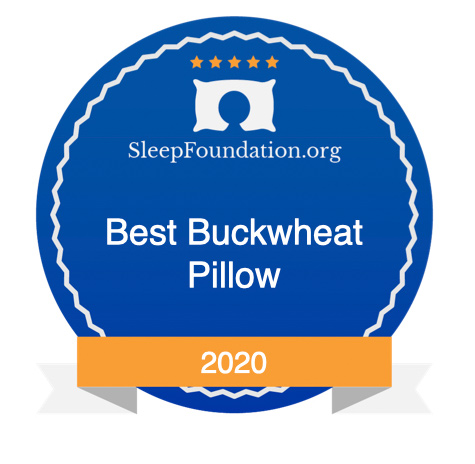
SleepFoundation.org has been the leading expert in everything sleep related for almost 30 years. The organization’s sleep science and health content is written and researched with the best standards of medical integrity.
Their sleep specialists recently added Hullo to their “best pillows” list, calling it the “best buckwheat pillow!”
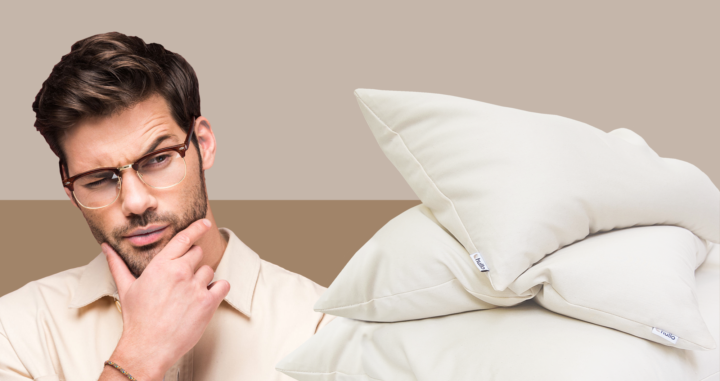
Have you ever tried sleeping on a buckwheat pillow? I’m going to guess the answer is “no.” And it’s your skepticism of these odd pillows that brings you to this page.
I too was very skeptical when I first tried a buckwheat pillow. It actually took me several weeks to really get used to it. Now, I love them so much that I manufacture and sell them (go ahead, click the Hullo logo up there in the corner!).
I’m a little biased, but…
I’ll grudgingly accept that buckwheat pillows aren’t for everyone!
As much as we’d like to wow every single customer, it doesn’t always work out that way. Some of our customers return their buckwheat pillows. From this return data, I have gathered an accurate perspective of consumers’ criticisms. 90% of issues can be categorized into three groups.

Buckwheat Pillow Disadvantage 1:
They make a rustling sound when moved.
Buckwheat pillows’ filling isn’t as quiet as most most traditional pillows’. Buckwheat hulls make a gentle rustling sound when moved. Their rough edges brush against one another resulting in this sound.
Some find this distracting. Those sensitive to noise usually adjust within a few nights. Most, myself included, aren’t bothered by it at all. In fact, some reviewers report that they find the sound soothing.
It’s worth noting that the noise that buckwheat hulls make decreases over time as the hulls break in and their rough edges round off. After a few of months, some buckwheat pillows (depending on the type of hull filling used) become significantly quieter.
Buckwheat Pillow Disadvantage 2:
They’re too firm for some.
It’s true, buckwheat pillows are certainly “firm.” They’re about as firm as pillows come. Those acclimated to soft, squishy traditional pillows might be surprised when they first try to sleep on a buckwheat pillow. They can initially feel too firm to the uninitiated.
Too many people immediately disqualify all firm pillows. I suppose for good reason… most firm pillows are uncomfortable! That’s because most aren’t malleable or moldable. They’re filled with hard loafs of foam or latex. Or they’re stuffed very tightly with feathers/down. These firm pillow types can’t be squished into that shape that just “feels right.”
Unfortunately, a non-malleable pillow that doesn’t conform to the shape of your head, neck and shoulders can feel like a rock.
Buckwheat pillows are different from most firm pillow types — they’re extremely malleable. It will change shape to perfectly fit the shape of your head, neck and shoulders, evenly distributing weight. Your head’s mass is uniformly spread across the pillow’s surface. Your head is comfortably cradled without any pain-causing pressure points.
Still, some people don’t want that; they prefer a very soft pillow.
Buckwheat Pillow Disadvantage 3:
They are not lightweight.
A 20×26″ buckwheat pillow weighs around 9 pounds, which is pretty hefty compared to most traditional pillows.
Very few customers find issue with the weight of buckwheat pillows, but it does come up. Some struggle with putting the pillow cases on and off or moving their pillow around.
Unfortunately some customers immediately request to return their buckwheat pillow without even opening the packaging.
Buckwheat pillows are very different from what some expect a pillow to be. Because of this, many first-time users form negative impressions as soon as the pillow arrives in the mail. Give it a chance!
Buckwheat pillows definitely take some getting used to. I wasn’t convinced my first one would work for me, because it was so different from the squishy soft pillows I’d grown up with. Thankfully, I acclimated and I sleep better than ever.
Wait! What about the ADVANTAGES of buckwheat pillows?
I’ve told you all about the disadvantages of buckwheat pillows… Let’s not forget about their benefits! Read More: The 3 Benefits of a Buckwheat Pillow (What Convinced Me to Switch)
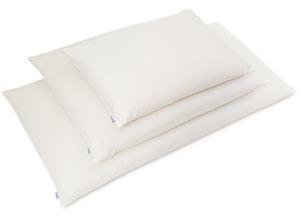
Consider trying Hullo buckwheat pillow.
If my explanation of buckwheat pillows’ disadvantages still leaves you skeptical, I suggest you put the issue to bed once and for all! Give Hullo a try. Sleep on our buckwheat pillow for 60 nights and if it isn’t for you, just ship it back to us and we’ll refund the purchase price.
We think it’s the best buckwheat pillow available, but don’t take our word for it, check out these customer reviews.
Hullo is honored and humbled to be named editor’s pick for “best buckwheat pillow” at Tuck.com. Tuck’s review team compared the 6 top buckwheat pillow brands in a detailed analysis and found Hullo to be the standout product.
Tuck provides detailed resources on every imaginable sleep topic.
Finding reliable and useful information about sleep is difficult. What should be a simple Google search is a confusing and contradictory assortment of information. Thankfully, a single resource for everything sleep-related is available: whatever your sleep-related curiosity, Tuck.com has the information you seek.
Tuck’s content is well-informed and researched by the best minds in the sleep industry. Psychologists, psychiatrists, neurologists, physical therapists and pediatricians contribute to accessible articles that can help you get better sleep.
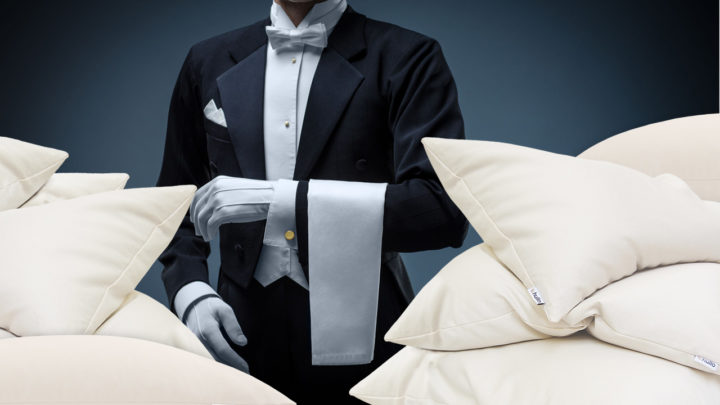
Good restful sleep is something we all can appreciate. A good pillow that comfortably supports your precious 5 lb. head every night is a luxury worth having! You spend a third of your life in bed after all.
The hotel industry knows what kind of luxury pillows their customers expect.
The best hotels have a reputation to uphold. They must wow their discerning customers to maintain and grow their luxury brands. Being that hotels offer their customers a place to sleep, they’ll spare no expense where bedding is concerned.
Hotel guests are paying for a place to literally lay their head. That’s why we don’t have to look any farther than the top hotels to find the best luxury pillows.
Most hotels’ luxury pillows are filled with 100% goose down.

Goose down is undeniably great pillow filling. Down pillows are durable, moldable, and work reasonably well for all sleep positions.
They’re comfortably familiar to most sleepy travelers. That’s why they’re generally the default type of pillow in every luxury room. Most of us are happy to dive into a high-quality down pillow and will sleep well on it.
Advantages of Down Pillows:
- Moldable/Malleable – A down pillow tends to hold its shape well, offering good support for your head and neck.
- Light and Cuddly – Down pillows are very light (heavy feathers don’t work very well for flying after all!) and soft.
- Durable – With proper care, a down pillow can last many years.
- A Sustainable Product – Down is a renewable resource that is biodegradable and recyclable.
Disadvantages of Down Pillows:
- Requires Maintenance – To maintain a down pillow’s loft, it requires consistent fluffing.
- Difficult to Clean – Hotels are experts at cleaning down pillows, but it can be a little difficult to do at home without damaging them.
- Lack of Firm Options – Down pillows tend to be a little too soft for many. Thus they’re unable to offer the support that some other pillows can.
- The Poor Birds! Down doesn’t grow on trees and unfortunately a lot of it is harvested in ways considered to be inhumane.
If you’re looking to purchase a down pillow, here’s a couple things to consider:
- A real down pillow contains down only — no feathers. Many manufacturers sell a combination of down and feather fill and label it “down.” Feathers are an economical way to add volume, but often the feathers’ quills will stick through the pillow poking your pretty face (ouch!) while you sleep. Avoid combination filling. Look for 100% down only.
- Hungarian goose down (otherwise known as European white goose down) is considered to be the best quality. Their down clusters are pure white and larger than most other types.
- A luxury down pillow should be made with a high-quality fabric case. These things can last a long time IF its fabric is durable. We recommend organic cotton fabrics.
- The Responsible Down Standard is an independent, voluntary global set of guidelines that recognizes and rewards the best practices in the harvesting of bird feathers. Down pillows manufactured to this standard help to prevent the suffering of birds. Read more…
What other luxury pillows are available? Ask to see your hotel’s pillow menu.
The best hotels recognize that their customers have refined tastes and appreciate alternatives. It’s a relatively new trend, but many hotels now offer pillow menus. It might sound a little pretentious… but you shouldn’t be afraid to ask!
My wife does a lot of work-related travel. Thanks to her, I’ve reviewed all the popular luxury hotels’ pillow menus. Down pillows excluded, many menu options aren’t what I’d call “luxurious.” If you’ve never tried memory foam, latex or the various contour pillow options, don’t bother. I’ve tried them all and the disadvantages outweigh the benefits.
Try a buckwheat pillow.
Buckwheat pillows are available on most luxury pillow menus. Most people have never heard of them. They’re sort of like a bean bag for your head. These unique pillows are filled with tiny buckwheat hulls, the byproduct of milling the buckwheat plant. What’s so great about them?
1. Buckwheat pillows offer superior support.
Your pillow’s most important job is to comfortably and consistently support your head and neck. A good pillow will cradle your body all night in what’s called “neutral alignment.” That is, it helps to keep all the bits and pieces in your spine in in their ideal positions. This prevents unnecessary pressure on your discs, muscles and nerves. Proper support=comfort.
Soft squishy traditional pillow types can collapse under the weight of your head, or are inevitably too thin/thick. They aren’t conducive to good rest!
Buckwheat pillows’ unique malleable quality makes them superior to other filling types. They’ll conform perfectly to the shape of your head and neck providing support that’s just for you.
Ideal support is accomplished with:
- proper elevation of your head. Your head isn’t positioned too high or too low, preventing uncomfortable bends and twists in your spine.
- even distribution of your head’s weight. Your head’s mass is uniformly spread across the pillow’s surface; there are no pain-causing pressure points.
- consistent fill density. Your pillow’s fill will not collapse or flatten under the pressure of your body. Consequently, your head and neck will be consistently aligned.

A buckwheat pillow’s adjustable loft provides ideal support for everyone regardless of body type or sleep position.
It’s quite likely that any non-adjustable pillow you buy will be either too thick or thin for you. Fortunately most buckwheat pillows allow you to adjust the thickness, or loft, by adding or removing fill via a zippered opening (don’t get a buckwheat pillow without it). It doesn’t matter what size you are or what sleeping position you prefer, a buckwheat pillow can support your head at the correct elevation. You’ll be able to fine-tune the loft so that your head and neck are positioned just right.
A buckwheat pillow’s filling will conform perfectly to the shape of your head, evenly distributing your head’s weight.
Most soft pillows cannot not support your head as completely as a buckwheat pillow does. A buckwheat pillow’s unique hull filling will conform to the shape of your head and neck precisely. Its malleable character allows it to evenly distribute your head’s weight, thus eliminating pain-causing pressure points.
The individual buckwheat hulls’ irregular shape causes friction between them. This friction between the hulls enables the pillow to hold its shape.
A buckwheat pillow won’t collapse in the middle of the night.
Unfortunately traditional soft pillows stuffed with filling like down slowly flatten out under the weight of your head while you sleep. This will result in an uncomfortable downward bend in your neck. Folding your pillow in half is popular solution. Sadly this often creates the opposite problem: an upward bend in your neck!
Continually re-fluffing or adjusting your in the middle of the night to get a bit more loft (thickness) out of your pillow, isn’t the best way to sleep.
2. Buckwheat pillows stay cool.
Down, foam and other pillow types retain body heat and can quickly become hot and uncomfortable. Have you ever woken up in the middle of the night and had to flip your pillow to the cool side? That doesn’t happen with buckwheat pillows. You’re on the cool side all night.

Buckwheat pillows’ cooling ability is due to the breathable nature of their hull filling.
There’s lots of free space between the individual buckwheat hulls so that air can flow freely through the pillow keeping it cool and dry even in the hot summer months. lt allows warm humid air absorbed from your body to quickly escape the pillow, consequently preventing uncomfortable heat build-up.
3. Buckwheat pillows are all-natural & biodegradable.

Many popular pillow types contain polyurethane or polyester foam that can emit toxins and carcinogens that aren’t good for you or our environment. There’s no sense in risking your health or filling our landfills with potentially toxic waste!
The comfort of buckwheat pillows comes with no strings attached.
Buckwheat pillows are safe for your family and the environment. Buckwheat crops benefit little from chemical fertilizers, and therefor it is free of many of the contaminants that are present in other crop types. The hulls are also compostable, which helps to reduce unnecessary waste in our landfills and keeps our soil healthy and nutrient rich for future generations. Additionally, for those interested in a vegan lifestyle, buckwheat pillows contain no animal products like down pillows.
Consider trying Hullo™ buckwheat pillow.
If you’ve decided a buckwheat pillow is worth giving a shot, please consider our product, Hullo. We think it’s the best buckwheat pillow available, but don’t take our word for it, check out these customer reviews.

